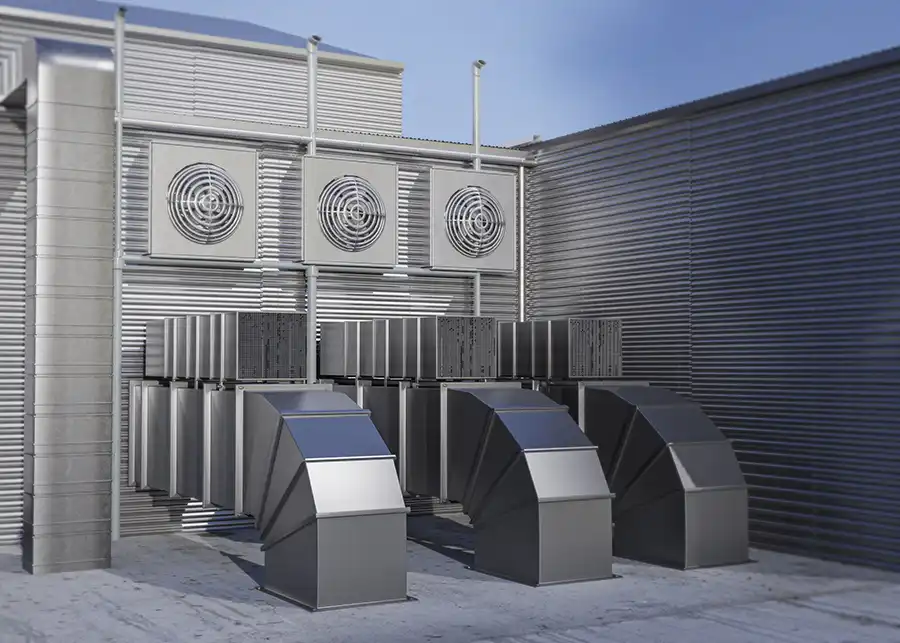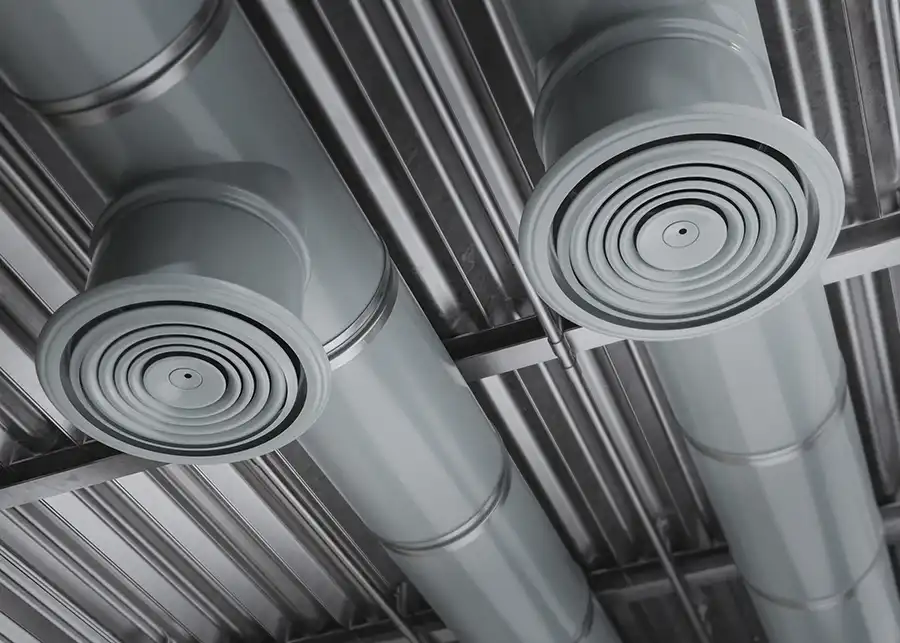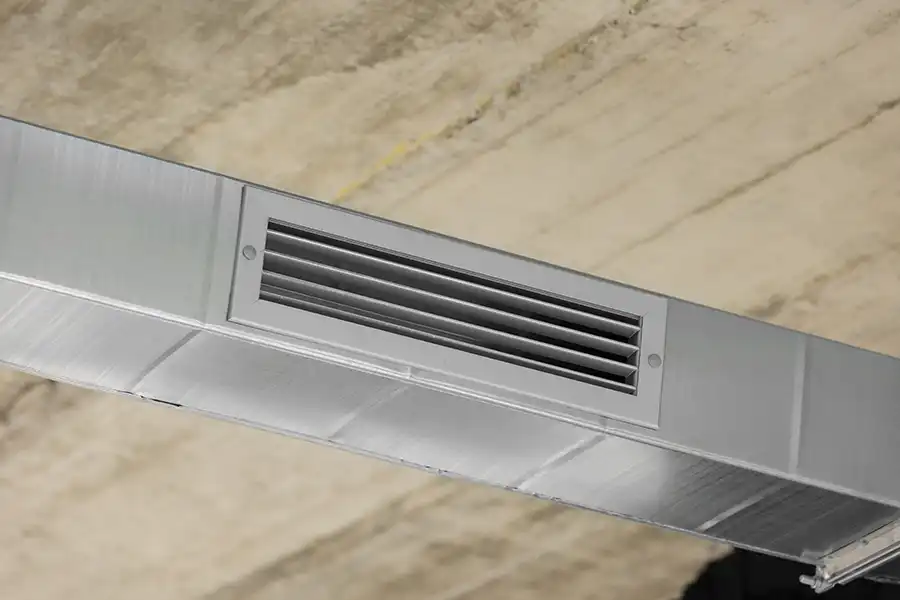In any industrial or warehouse environment, effective ventilation is essential for ensuring the safety, comfort, and productivity of workers. Ventilation systems play a critical role in maintaining air quality, controlling temperature, and managing humidity levels. At Unitech SA, we understand that proper ventilation planning is not just about compliance—it’s about protecting people, equipment, and productivity.
This article explores the key considerations when planning a factory or warehouse ventilation system and how a well-designed solution can improve your facility’s performance.

Why Ventilation Matters in Industrial Environments
Factory ventilation systems are designed to replace or exchange air within an enclosed space, removing dust, fumes, and vapors while maintaining optimal working conditions. Proper airflow helps prevent the buildup of heat and contaminants, safeguarding both machinery and the people who operate them.
There are three main approaches to factory ventilation:
-
Natural Ventilation: Uses wind pressure and temperature differences to move air. It’s energy-efficient and affordable but may not suit large facilities or areas with high pollutant levels.
-
Mechanical Ventilation: Uses fans, ducts, and filters to control airflow. It’s reliable, consistent, and customizable for specific factory layouts and processes.
-
Hybrid Ventilation: Combines both natural and mechanical systems, offering flexibility and improved energy efficiency.

Key Factors to Consider When Planning
1. Identify Pollutants and Air Quality Needs
Different industries generate different contaminants—such as welding fumes, paint vapors, or dust. Begin with an air quality assessment to identify problem areas and determine the ventilation capacity required to maintain a healthy working environment.
2. Calculate Air Exchange Requirements
Your system should provide sufficient air changes per hour based on the factory’s volume, number of workers, and type of activities. Proper calculation ensures consistent airflow and pollutant control.
3. Ensure Compliance with Regulations
Every factory must comply with occupational health and safety standards. Unitech SA ensures all designs meet local and national regulations, keeping your operations compliant and your workforce protected.
4. Energy Efficiency and Cost Management
Modern ventilation technology allows for significant energy savings. Energy-recovery ventilators, variable-speed fans, and smart control systems can reduce running costs while maintaining performance.
Steps to Designing and Implementing a Ventilation System
-
Conduct a Site Assessment: Identify zones with poor air movement or pollutant buildup.
-
Collaborate with HVAC Professionals: Our experts at Unitech SA tailor each ventilation system to your factory’s structure and workflow.
-
Install and Test Thoroughly: Proper installation and airflow testing ensure that all components function efficiently.
-
Maintain Regularly: Schedule inspections, filter changes, and system cleaning to preserve long-term performance.
Modern Advancements in Factory Ventilation
Smart sensors and automated controls have transformed how ventilation systems are managed. These technologies automatically adjust airflow based on occupancy, humidity, and temperature, ensuring energy-efficient performance with minimal manual oversight.
Integration with Building Management Systems (BMS) allows factory owners to monitor air quality and power usage in real time—helping to detect issues early and maintain optimal conditions throughout the facility.
Benefits of Proper Ventilation
-
Improved Air Quality: Reduces dust, fumes, and harmful pollutants, promoting worker health and safety.
-
Enhanced Comfort and Productivity: Balanced temperature and humidity improve morale and efficiency.
-
Reduced Energy Costs: Energy-smart systems deliver measurable savings over time.
-
Regulatory Compliance: Proper design and maintenance keep your factory legally compliant and operationally reliable.
Planning an efficient ventilation system is a vital part of responsible factory management. By understanding your facility’s needs, considering modern solutions, and partnering with a trusted provider like Unitech SA, you can ensure cleaner air, safer working conditions, and improved productivity.
At Unitech SA, we specialize in designing and implementing ventilation systems that support both worker wellbeing and operational efficiency—because a well-ventilated factory is a productive factory.

Q&A
Q: Why is ventilation so important in a factory?
A: Ventilation removes heat, fumes, and contaminants, ensuring workers stay safe and comfortable while machinery operates efficiently.
Q: What type of ventilation system is best for my factory?
A: It depends on your space, processes, and air quality requirements. Unitech SA assesses each site to recommend the right natural, mechanical, or hybrid system.
Q: How often should a factory ventilation system be maintained?
A: Filters, ducts, and fans should be checked every three to six months, depending on the level of air contaminants and system usage.
Q: Can ventilation help reduce energy costs?
A: Yes. Modern systems with energy-recovery features and automated controls can significantly reduce operating expenses while improving air circulation.
Q: Does Unitech SA handle both design and installation?
A: Yes. We provide a full-service solution—from assessment and design to installation and maintenance—to ensure lasting performance.
Our Professional Services Include:

Office: 010 023 0507
Business Whatsapp: 079 526 1950
Email: admin@unitechsa.co.za
Norman Koster – 066 239 0382
Desiree Koster – 082 608 2291






